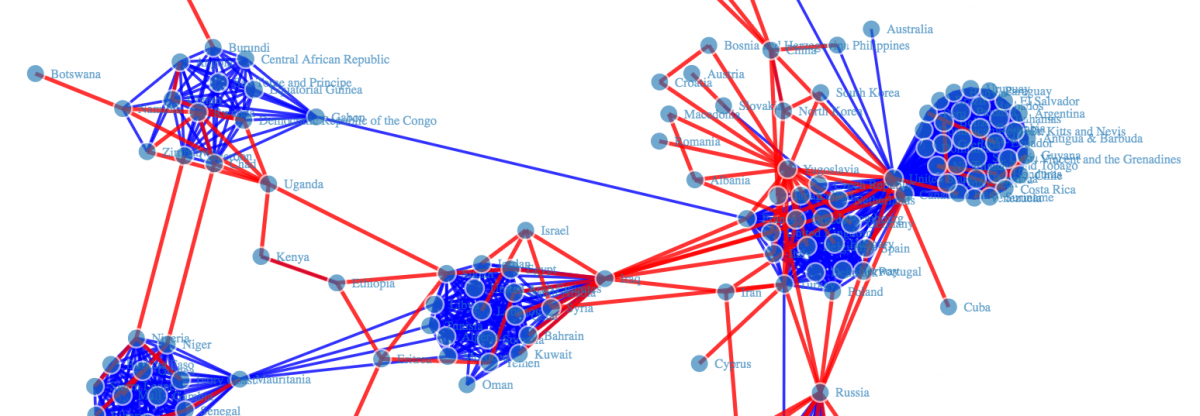Maoz, Zeev, Paul Johnson, Aaron Shreve, and Fiona Ogunkoya. “The Dyadic Militarized Interstate Disputes (MIDs) Dataset, Version 3.0.: Logic, Characteristics, and Comparisons to Alternative Datasets.” Click here for full text.
Abstract: We introduce the new, substantially updated and revised version of the Dyadic Militarized Interstate Disputes (DYMID) dataset. We discuss the underlying logic of constructing dyadic MIDs and demonstrate that these operations generate significant differences between the actual occurrence and properties of MID dyads and those extracted from machine-generated programs such as EUGene, or from the MID participant dataset. We provide some descriptive measures of dyadic MIDs over the period of 1816-2010 and compare some of the key dyadic results on the correlates of MIDs using different datasets. We discuss the theoretical and empirical implications of our results.
Keith Burghardt, Luba Levin-Banchik, Michelle Christine Phillips, and Zeev Maoz. “Structural Resilience and Rigidity of Cooperative Multiplex Networks undergoing Shocks.” Click here for full text.
Abstract: In many cooperative networks, such as alliance and trade networks, abrupt and intense changes to the state of the system (which we call \shocks”), such as wars or tariff increases, can substantially change the network. We examine how such shocks affect multiplex networks via an agent-based model that simulates network evolution prior to and following shocks. In our model, agents interact on a coupled pair of networks, collectively known as a multiplex network, and add, drop, or change ties in order to maximize their utility (although some ties may be created at random to simulate human error). At a certain time-point, some agents are \shocked” by changing (increasing or decreasing) the cost associated with tie-formation or tie-maintenance. We focus on network resilience, that is, the degree to which a network retains its structural characteristics given a shock that restricts tie-formation. We also focus on network rigidity, that is, the degree to which a network retains its structure despite a significant increase in the incentives for tie-formation. The model yields three important results. First, emergent post-shock networks have emergent memory, meaning that their current structure depends on their past structure, even though individual agents do not have any memory. Second, we find significant neighborhood effects on agents’ resilience and rigidity: agents are affected by shocks taking place in the network even if they have not been directly exposed. We explore several types of neighborhood effects on resilience and rigidity to elucidate this finding. Finally, noise, defined as the probability of random (non utility-maximizing) choice, tends to increase nodal utility. Making mistakes can apparently help an agent in the long run by allowing it to explore the utility landscape and find network configurations that are overall beneficial. We conclude our paper with discussions of future strategies for validating the model via experimental and empirical data analyses of social and international networks.
